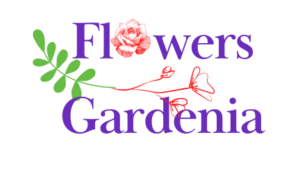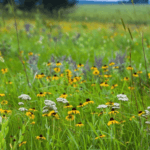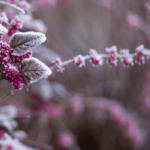
Beautiful flowers gardenia Plants For Your homes

For garden lovers and plant experts, plant resilience is key to winter gardening success. It shows how hardy plants can survive the cold and come back to life in spring. Understanding winter survival means knowing how important low temperature tolerance is. Plants that can handle freezing temperatures help make gardens look green in spring and summer.
To make plants tough, we need to follow the USDA Plant Hardiness Zones. These zones help gardeners choose the right plants for their area. Knowing these zones and picking the right plants at the right time can make gardens beautiful even in winter.
The USDA Plant Hardiness Zones are key for gardeners. They help pick cold weather plants right for their area. This tool is vital for knowing how cold plants can handle frost and for successful cold climate gardening.
Started in 1960, these zones divide the country by average winter cold. Knowing these zones is more important now because of climate change. It changes how we make gardening choices.
The idea of Hardiness Zones came from wanting a scientific way to pick plants for the cold. They go from Zone 1, where it gets as cold as -55°F, to higher zones where it’s warmer.
Finding your zone is key for picking the right frost-hardy trees and plants. You can use the interactive online map and other gardening resources. Just enter your zip code to get your zone info. This helps pick plants that fit your local climate.
These zones are helpful, but local microclimates can change how well plants grow. Things like elevation, water nearby, and urban heat islands can affect plants. You might need to adjust your garden for these microclimates.
Because of climate change, zones are changing. Gardeners need to update their gardening practices. Keeping up with zone changes helps make sure your garden stays healthy and works well.
| Zone | Temperature Range | Typical Plants |
|---|---|---|
| 3-9 | -40°F to 30°F | Hydrangea |
| 7-11 | 0°F to 40°F | Windmill Palm |
| 10-13 | 30°F to 60°F | Citrus Trees |
Knowing these zones helps with frost tolerance and knowing when plants bloom. This info is key for planning your garden.
To make your garden thrive, especially in places like Fort Lauderdale, Florida, knowing hardiness zones is key. These zones help pick the right plants for your area. But, it’s more than just knowing the cold resistance. You need to consider other factors for true garden success.
Picking the right plants is crucial for your garden’s success. Plants that fit your area’s temperature can grow faster and do better. Local nurseries and extension services offer great advice on picking plants that are tough and adaptable.
The last frost date is very important for gardeners. It helps you know when to plant to avoid frost damage. Knowing this date helps your plants grow well. It’s key to track these dates for good garden planning.
Changes in the climate mean changes in plant hardiness zones. A small temperature rise can move a zone to a warmer one. This means you might need to pick plants that can handle the heat.
Adding plants that are tough in the cold is a good idea. This shows how our gardens need to adapt to climate changes. Keeping up with the latest on USDA Cold Hardiness Zone guidelines is a must for garden lovers.
| Zone | Last Frost Date | Suggested Cold-Resistant Plants |
|---|---|---|
| 9A | March 5 | Camellias, Citrus |
| 9B | March 15 | Palm trees, Hibiscus |
| 10A | February 25 | Orchids, Avocado |
| 10B | February 10 | Mango, Bougainvillea |
| 11 | January 30 | Bananas, Ginger lilies |
As we face more climate changes, gardeners need to understand how zones change. Knowing about last frost dates and picking cold-resistant plants prepares your garden for now and the future.
The USDA Cold Hardiness Map is a key tool for gardeners and farmers. It helps pick plants that will do well in your area by looking at their low temperature tolerance. By using this map, you can see how tough plants need to be for your area.
The map splits the U.S., Alaska, Hawaii, and Puerto Rico into 13 zones, each with a color. Each zone has a 10°F range, which is important for picking the right plants for your garden. These zones also have ‘a’ and ‘b’ sub-zones, which break down the temperature range even more. This gives you more precise advice for what to plant.
| Zone | Temperature Range | Sub-zone | Sub-zone Temperature Range |
|---|---|---|---|
| 1 | -60°F to -50°F | 1a | -60°F to -55°F |
| 1 | -60°F to -50°F | 1b | -55°F to -50°F |
| 13 | 60°F to 70°F | 13a | 60°F to 65°F |
| 13 | 60°F to 70°F | 13b | 65°F to 70°F |
To use the USDA Cold Hardiness Map well, match your garden’s plants with your zone’s temperature range. This makes sure every plant can handle your area’s coldest winter temperatures.
Also, by looking at local factors like microclimates and urban heat effects, the USDA Cold Hardiness Map becomes more than just a tool. It’s a key part of planning your garden in any part of the country. Using it can greatly improve how well plants survive and thrive. It fits well with global efforts towards sustainability and eco-friendly gardening.
Understanding cold hardiness is key for keeping plants healthy in the cold months. Concepts like freeze resistance and winter survival help us protect our plants. These ideas are vital for keeping our greenery safe.
Cold hardiness means how well a plant can handle the cold without getting hurt or dying. It’s crucial for a plant to survive the winter. Plants that can handle freezing temperatures are said to have freeze resistance.
Freeze resistance is about how plants react to cold weather. They adapt by changing their cells, biochemistry, or structure. For example, the ‘GoldRush’ apple tree can handle temperatures as low as -22°F. This is much colder than its USDA hardiness zone suggests.
To keep plants safe in the cold, choose hardy perennials that fit your area’s climate. Look at environmental factors and hardiness zones when picking plants. Using cold weather strategies, like finding warm spots in your garden, helps too.
Choosing the right plants and using smart gardening practices boosts plant survival in winter. By picking the right species and using local conditions, we can keep our plants healthy all year.
Understanding cold hardiness zones is key to gardening and landscape planning success. These zones show the lowest temperatures a place can get each year. They help gardeners pick plants that will do well in their area.
The USDA divides North America into hardiness zones by average winter minimum temperatures. Each zone is 10 degrees Fahrenheit apart. Zone 1 is the coldest, and Zone 11 is the warmest.
A plant marked as “hardy in Zone 4” can handle temperatures down to -30 degrees F. This is important for gardeners to know to avoid winter damage.
The USDA also splits zones into ‘a’ and ‘b’ parts. This adds a 5-degree Fahrenheit refinement to each 10-degree zone. Knowing if a region is 5a or 5b helps with planting and growing plants.
Keeping up with the latest zoning and plant info is key to gardening success. Knowing the specific needs of each temperature range and hardiness zone helps create a thriving garden.
| Zone | Min Temp (F) | Typical Regions |
|---|---|---|
| 1 | -50 to -60 | Extreme Northern North America |
| 5a | -20 to -15 | Northern States |
| 9b | 25 to 30 | Coastal Southern States |
For more help with choosing plants for your climate, or for gardening advice, check out Flowers Gardenia. They offer expert advice on cold hardiness zones and gardening.
In the world of gardening, especially in cold areas, myths can mislead even careful gardeners. Correcting these myths boosts garden health and sustainability. It also makes sure we understand frost tolerance, cold-resistant plants, and hardy plants correctly.
One myth is that adding sugar to soil helps plants grow or taste sweeter, like tomatoes. But plants don’t take sugar from the soil. Also, crushed eggshells don’t work well to keep slugs away because they break down quickly.
Many think you need to change potting soil every year. But, adding compost and specific fertilizers to the soil can make it better for a long time.
Some gardeners think all ‘hardy’ plants can thrive everywhere. But, these plants may not do well in warmer areas because of the soil and different temperatures they need.
It’s also a myth that all vegetables need full sun. Too much sun can cause problems like less pollination, dropped blossoms, and dehydration for plants like tomatoes and peppers.
Knowing your local climate is key. For example, balsam fir is very cold-hardy but can get damaged by mild temperatures when it’s growing.
Wrapping plants in burlap is not just for warmth. It really protects them from drying winter winds.
Snow and mulch are great insulators. They keep soil warm better than many man-made insulators. This shows the value of using natural methods to help plants handle frost.
By clearing up these myths, gardeners can use better methods that really meet their plants’ needs. This leads to gardens that are strong and look great, even in cold weather.
Understanding cold hardiness is key to making your garden thrive. By using USDA zone maps and knowing about microclimates, you can help your plants survive the winter. For example, peaches need 800 to 1200 hours of chill, while apples need over 1200 hours.
Studies show that the right chill hours are crucial for plants to bloom and produce fruit. This shows how important it is to match plants with their climate. Cultural practices, like pruning, also play a big role in how well plants do in the cold.
For example, trees get ready for winter by changing in autumn. This helps them survive the cold. Making sure to prune them at the right time helps them stay strong.
Looking at long-term weather data helps us plan for the future. We can use this info to make our gardens more resilient. By adapting to climate changes, gardeners can keep their gardens healthy and full of life.
The mix of art and science in gardening helps us care for our gardens better. As the climate changes, these strategies will help gardeners everywhere. They will keep their gardens thriving.




